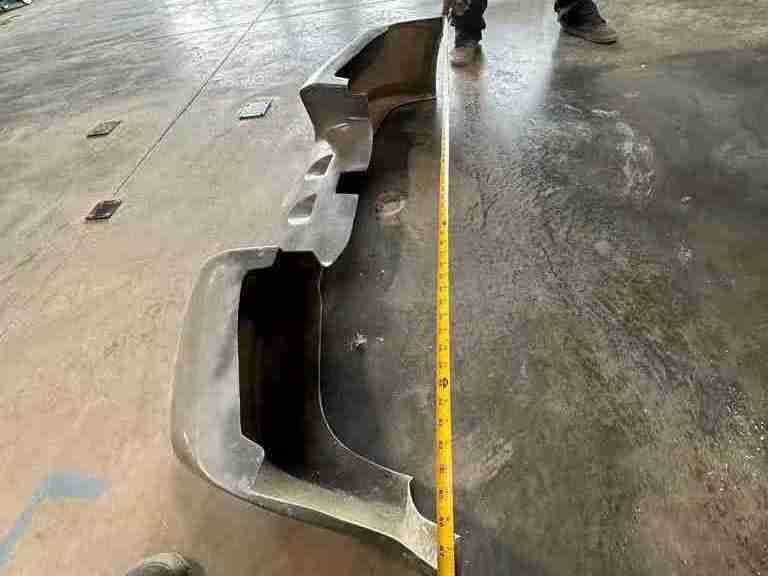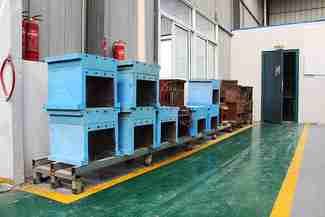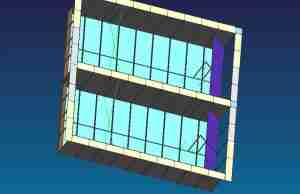Molded fiberglass products are incredibly versatile, durable, and lightweight, making them an ideal choice for a diverse range of applications spanning numerous industries. These products are integral to the manufacturing of items such as automotive parts, boat hulls, bathtubs, swimming pools, and even aircraft components.
In this comprehensive guide, we aim to provide an in-depth understanding of molded fiberglass products, starting with a fundamental question: What is fiberglass?
Fiberglass, as the name suggests, is a type of fiber-reinforced plastic where the reinforcing fiber is specifically glass fiber. This glass fiber may be randomly arranged, flattened into a sheet, or intricately woven into a fabric. The resulting material is impressively strong yet lightweight and can be molded into various shapes and forms. This molding process imbues fiberglass products with their remarkable versatility, opening up a plethora of possibilities in terms of their applications.
In the subsequent sections of this guide, we will delve deeper into the unique properties, manufacturing processes, and applications of fiberglass, helping you grasp why it is such a popular material across a multitude of industries.
Molded Fiberglass Products Manufacturing Process
Understanding the manufacturing process of molded fiberglass products is critical in appreciating their adaptability and versatility.

The process of creating these products typically involves one of the following methods:
- Hand Lay-up: This is the simplest and oldest method for creating fiberglass composites. It involves manually laying the fiberglass mat or fabric onto a mold, and then applying the resin by brush or roller. The laminate is left to cure, usually at room temperature. While this process is labor-intensive, it is also highly flexible, allowing for the production of a wide range of product shapes and sizes.
- Spray-up: This method is similar to hand lay-up, but instead of manually laying the fiberglass, the fibers and catalyzed resin are sprayed onto the mold using a chopper gun. This technique allows for faster application and is particularly useful for large or complex molds.
- Compression Molding: In this method, a preheated composite material is placed into an open heated mold cavity. The mold is then closed, and pressure is applied until the material has cured. This method offers high production rates, excellent part reproducibility, and efficient material usage.
- Injection Molding: This process involves heating the raw material and then forcing it through a mixing screw into a mold. The material cools and hardens into the shape of the mold. Injection molding is ideal for the high-volume production of intricate parts, offering excellent surface finish and detail.
- Pultrusion: Pultrusion is a process for creating constant cross-section profiles. Here, the materials, typically in the form of rovings or mats of fiberglass, are pulled through a heated die where they are impregnated with a resin. Upon exiting the die, the resultant part has a constant cross-section and is left to cure. This method is ideal for producing long, straight sections such as rods, pipes, and structural shapes.
Each of these processes has its unique advantages, and the choice of method often depends on factors such as the desired part geometry, production volume, material characteristics, and cost considerations.
Properties of Molded Fiberglass Products
Understanding the inherent properties of molded fiberglass products can help illuminate why they are a preferred material choice in many industries. Here are some key attributes that define these products:

High Strength-to-Weight Ratio: Fiberglass products are renowned for their impressive strength-to-weight ratio. This means that they can provide the same strength as heavier, denser materials but at a fraction of the weight. This characteristic makes them especially suitable for industries where weight is a critical factor, such as automotive and aerospace.
Corrosion Resistance: Fiberglass products are inherently resistant to corrosion, making them an excellent choice for applications where exposure to harsh or corrosive environments is a concern. They can withstand exposure to a wide range of chemicals and weather conditions without degrading, thus promising longevity.
Heat Resistance: Another significant advantage of fiberglass products is their resistance to heat. They maintain their structural integrity at higher temperatures better than many other materials, making them ideal for applications that involve high heat or fire risk.
Electrical Insulation: Fiberglass is an excellent insulator, offering high resistance to the flow of electric charge. This makes fiberglass products the go-to choice for many electrical and electronic applications where insulation is critical.
Cost-Effectiveness: Finally, in comparison to other materials like metal or wood, fiberglass offers an economical solution. Its low production costs, combined with its durability and low maintenance requirements, contribute to a lower total cost of ownership.
These properties make fiberglass a versatile material capable of meeting diverse requirements across various industries, from automotive and aerospace to electronics, construction, and more.
Applications of Molded Fiberglass Products
The versatility, durability, and cost-effectiveness of molded fiberglass products make them a popular choice across a wide array of industries. Here are some of the key applications:

Automotive: Fiberglass is a preferred material in the automotive industry due to its high strength-to-weight ratio. It’s used in the manufacturing of various parts including body panels, bumpers, hoods, and grilles. Its corrosion resistance makes it ideal for parts exposed to the elements and its lightweight nature contributes to fuel efficiency.
Construction: In the construction industry, fiberglass is used for a variety of components including roofing, door surrounds, windows, and panels. Its ability to withstand harsh weather conditions, coupled with its insulating properties, makes it a popular choice in this sector.
Aerospace: The aerospace industry requires materials that are lightweight yet strong, and fiberglass fits the bill perfectly. It’s used in the manufacturing of various aircraft components, contributing to the overall safety and performance of aircraft.
Marine: Fiberglass is a staple material in the marine industry, used extensively in the construction of boat hulls, decks, and interior components. Its resistance to corrosion and high strength-to-weight ratio makes it ideal for this environment.
Electrical: Given its excellent insulation properties, fiberglass is commonly used in the electrical industry. It’s integral to the production of circuit boards, providing an insulating layer that helps prevent electrical shorts.
Consumer Goods: Fiberglass finds wide application in everyday goods as well. Products like bathtubs, swimming pools, helmets, and even some types of furniture are made from fiberglass. It’s preferred for its durability, ease of maintenance, and aesthetic flexibility.
These are just a few examples of how molded fiberglass products are used. The possibilities are virtually endless given the versatility of this remarkable material.
Care and Maintenance of Molded Fiberglass Products

While molded fiberglass products are renowned for their durability and longevity, they still require some level of care and maintenance to keep them at their best. Here are some guidelines to ensure your fiberglass products stand the test of time:
Regular Cleaning: Keep your fiberglass products clean by washing them regularly with mild soap and water. This can prevent the buildup of dirt and grime, which over time can cause discoloration and affect the product’s aesthetic appeal.
Avoid Harsh Chemicals: Fiberglass may be resistant to many chemicals, but it’s best to avoid using harsh cleaning agents. These can damage the surface of the fiberglass, causing it to lose its shine and potentially weaken over time. Always opt for gentle, non-abrasive cleaning solutions when caring for your fiberglass products.
Regular Inspections: Keep an eye on your fiberglass products for any signs of damage or wear, such as cracks or chips. If detected early, these can often be repaired, preventing further damage and extending the life of the product. Regular inspections and prompt repairs can save you from the cost of full replacements.
Following these basic care and maintenance guidelines can help maintain the appearance and durability of your molded fiberglass products, ensuring they continue to serve their purpose effectively for years to come.
Tooling in Composite Design: The Art and Science of Molding
One of the key aspects of working with composite materials like fiberglass is the tooling process. This involves the use of molds to define the shape and surface finish of the final fiberglass parts. Let’s delve into the role of molds in composite design, the different types of molds, their lifespan, and the materials used in their construction.

A. The Role of Molds in Defining Fiberglass Parts
Molds are essentially the “blueprints” that give fiberglass its desired shape and form. They are carefully designed and manufactured to ensure the final product meets the required specifications for size, shape, and surface finish. The process begins with a plug or pattern that represents the exact shape and size of the finished part.
Molds are designed to withstand the high temperatures and pressures involved in the curing process. They must also be able to release the cured part without damaging it. The design of the mold can significantly impact the ease of manufacture, quality, and performance of the final fiberglass product.
B. Types of Molds, Lifespan, and Construction Materials
Molds can be classified into different types, such as open molds, closed molds, and inflatable molds, each offering its own set of advantages and suited to specific applications. The choice of mold type depends on various factors including the desired shape and complexity of the part, production volume, and cost considerations.
The lifespan of a mold is primarily determined by its construction material and the manufacturing conditions it is subjected to. Typically, molds made from high-quality materials and maintained properly can last for thousands of cycles.
As for materials used in mold construction, they range from less expensive options such as wood and plaster to more durable and heat-resistant materials like metals (steel, aluminum) and composites themselves. Advanced composites and ceramics are also used for molds that require superior dimensional stability and resistance to high temperatures.
The tooling process in composite design is both an art and a science, requiring careful consideration of the product requirements and manufacturing conditions. The choice of mold type and construction material directly impacts the quality, efficiency, and cost-effectiveness of the fiberglass manufacturing process. In the next section, we will explore the critical role of quality control and testing in the production of molded fiberglass products.
Conclusion: Why Choose Finn? Your Trusted Partner in Fiberglass Solutions
As we conclude our comprehensive guide to molded fiberglass products, it’s clear that the world of composite materials offers immense possibilities, from their robustness and versatility to their wide range of applications. But why should you choose Finn as your partner in this exciting field?
A. Unwavering Commitment to Quality and Cost-Effectiveness
At Finn, we believe that quality should never be compromised for cost. Our commitment to delivering the highest quality composite products is ingrained in our culture. We employ stringent quality control measures at every stage of the manufacturing process, ensuring that each product we produce meets and exceeds industry standards.
B. Consistent Reliability and Superior Customer Service
Reliability and customer satisfaction are the cornerstones of our business. We understand the unique needs and challenges of each client and offer personalized service to ensure that these needs are met.
C. Comprehensive Services Under One Roof
At Finn, we offer an extensive array of services to support our clients through every step of their composite product journey. These include:
Design: Our team of skilled designers works closely with clients to turn their ideas into tangible products.
Engineering: Our engineers ensure that the designs are feasible, efficient, and meet the required performance standards.
Process Development: We meticulously plan and develop the manufacturing process to optimize quality and efficiency.
Project Management: We oversee the entire project, ensuring that it stays on schedule and within budget.
Prototype Development: We create prototypes to validate the design and process
Manufacturing: Our state-of-the-art facilities are equipped to handle all types of fiberglass manufacturing processes.
Quality Control: Rigorous testing and inspection at every stage ensure the high quality of our products.
Assembly, Packaging, and Shipping: We provide complete end-to-end solutions, including assembly, packaging, and shipping of the finished products to the clients.
In the complex and evolving world of composite materials, Finn stands as a beacon of quality, reliability, and customer satisfaction. As your trusted partner, we look forward to helping you navigate this world and realize your composite product goals. Let’s explore the future of composites together!
